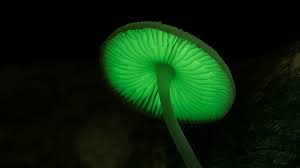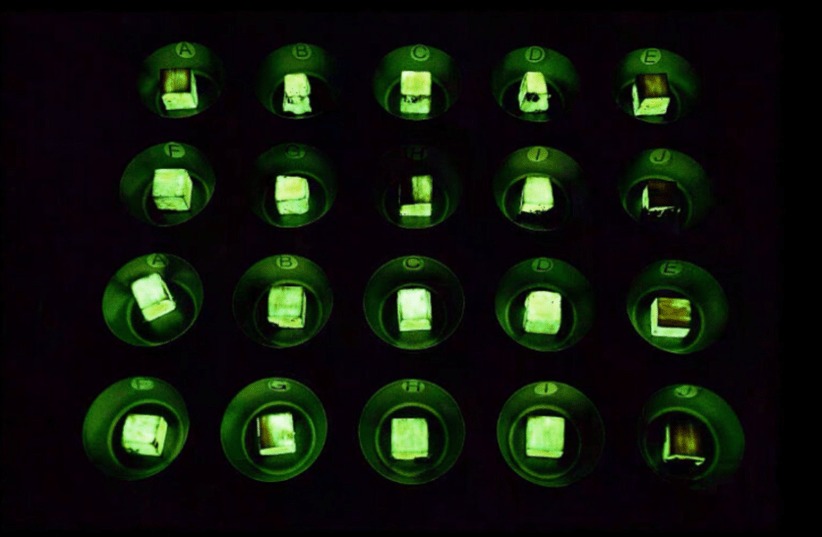Swiss Researchers Create ‘Almost Magical’ Luminous Wood Using Honey Fungus. This discovery combines biology and material science, opening doors to new applications in eco-friendly lighting, architecture, and art. The luminescent quality, achieved through natural fungal processes, represents a significant step forward in bio-based materials, offering an intriguing alternative to synthetic lighting sources.

The central concept revolves around integrating fungal luminescence into wood, creating a material that glows in the dark without electricity. By embedding the mycelium of the honey fungus into treated wood fibers, researchers achieved a stable bioluminescent effect. This process involves carefully nurturing fungal growth in controlled conditions, allowing the natural bioluminescent properties of the fungus to imbue the wood with light-emitting qualities.
The Science Behind Luminous Wood
The honey fungus (Armillaria mellea) is known for its bioluminescent capabilities, a natural phenomenon where specific enzymatic reactions produce light. This process is typically found in certain fungi and marine organisms. In this case, Swiss scientists utilized the metabolic pathways of the honey fungus to create a stable, long-lasting glow within the wooden structure.
The treatment process begins by preparing the wood to support fungal growth, often by introducing a nutrient-rich substrate. Once the fungus establishes itself within the wood, it metabolizes the provided nutrients, emitting light as a byproduct of its natural enzymatic reactions. The resulting material glows softly in darkness, maintaining its structural integrity while providing an organic light source.
The innovation is not merely aesthetic; it has practical implications for sustainable living. Luminous wood could replace traditional lighting in specific applications, reducing reliance on electricity and decreasing the carbon footprint associated with synthetic lighting technologies.
Comparing Luminous Wood with Existing Materials
To understand the significance of this breakthrough, it’s essential to compare luminous wood with other bioluminescent and light-emitting materials.
| Material | Light Source | Applications | Sustainability |
|---|---|---|---|
| Honey Fungus Luminous Wood | Fungal Bioluminescence | Decorative lighting, furniture, eco-art | High |
| Synthetic Glow-in-the-Dark Paint | Phosphorescent chemicals | Emergency signs, toys | Low |
| LED Lighting | Electrical energy | General lighting, displays | Moderate |
| Bioluminescent Algae | Algae metabolic processes | Art installations, marine studies | High |
This table highlights the uniqueness of luminous wood as a sustainable alternative, combining aesthetic appeal with environmental benefits.
Applications and Implications
The potential applications of luminous wood extend far beyond its visual allure. In architecture, it could be used for ambient lighting in eco-homes or as a striking feature in public spaces. Designers and artists may find inspiration in its organic glow, incorporating it into installations and functional sculptures.
One of the most promising applications lies in furniture design. Tables, shelves, and other wooden structures could be enhanced with luminous properties, creating functional yet visually captivating pieces. Additionally, the material could serve as an emergency lighting solution in off-grid environments or disaster-stricken areas, where traditional electricity is unavailable.
On a broader scale, the development of luminous wood underscores the importance of bio-inspired innovation. It demonstrates how biological processes can be harnessed to create sustainable alternatives to conventional materials, paving the way for a more harmonious relationship between human technology and natural ecosystems.
Challenges in Development
Despite its promise, the development of luminous wood is not without challenges. Ensuring the longevity and stability of the bioluminescent effect remains a critical hurdle. Fungal growth requires specific environmental conditions, such as moisture and temperature, which may limit the material’s usability in certain climates or applications.
Moreover, scaling production to meet commercial demand poses logistical and technical difficulties. The process of embedding fungus into wood is time-intensive and requires precise control to achieve consistent results. Researchers must also address concerns about the material’s durability and resistance to environmental factors such as humidity and pests.
A Glimpse into the Future
The advent of luminous wood represents a fusion of science and creativity, pointing to a future where sustainable materials redefine design and construction. As researchers refine the production process and explore new applications, you can anticipate seeing this glowing innovation make its way into mainstream use. Whether illuminating homes, inspiring artistic expression, or reducing energy consumption, luminous wood is poised to leave a lasting impact on both industry and society.
For you, this development is more than a scientific curiosity—it’s a reminder of the potential that lies in merging biology with technology. By embracing such innovations, you contribute to a world where sustainability and ingenuity go hand in hand, illuminating a path toward a brighter, more eco-conscious future.










Add Comment